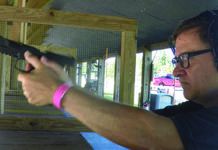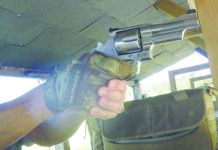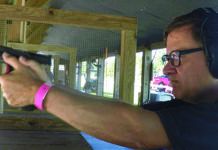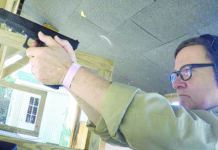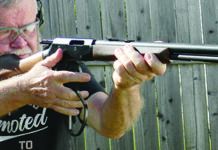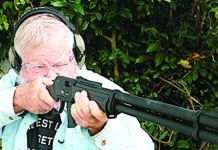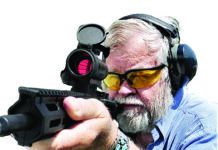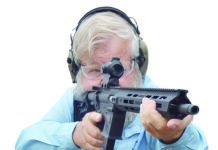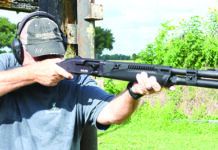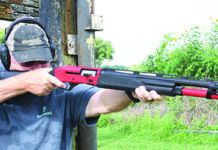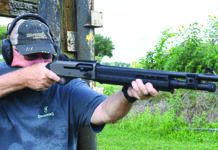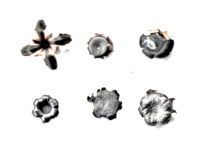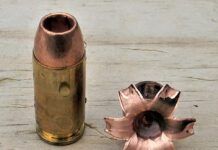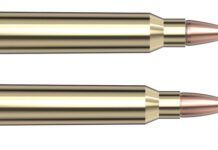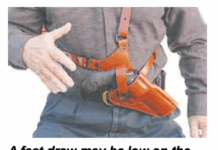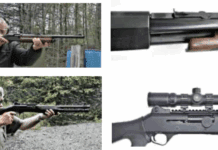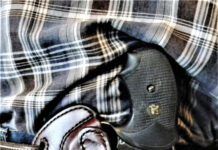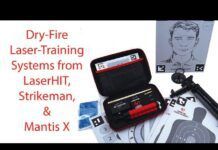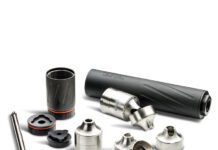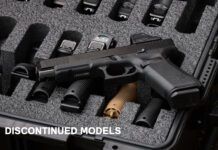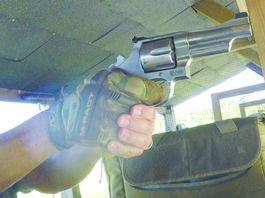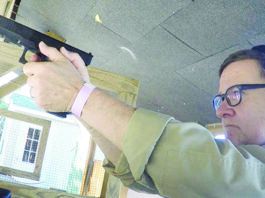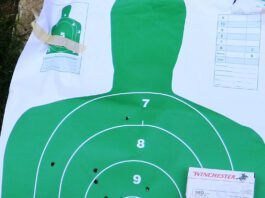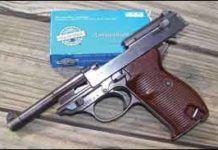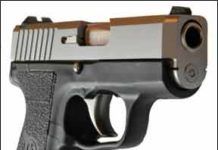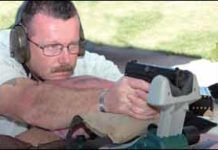Springfield Armory offers Father’s Day sale
Tip: How to Keep Your Perfectly Good Firearm from Becoming a Paper Weight
Gun Tests Inventory for Sale: Kahr CW9 9mm, $500
Industry Sponsors Show Support for 2011 MidwayUSA & NRA Bianchi Cup
Secure Firearm Products Sponsors 20th Annual International Revolver Championship
GSSF’s First-Ever Ladies-Only Match Runs May 28-29
PMR-30 Status Update IV
Videos on GunReports.com!
Classic Military 9mms: Luger Falls to High Power, Walther
More than 100 years ago, Georg Luger took the Borchardt pistol and redesigned it into one of the most famous military handguns of all time. While other handguns may have been better suited for warfare, none were better made of better material. Luger took the original pistol and changed the recoil spring, magazine, grip angle, barrel and even the caliber. But he kept the distinctive toggle action. The original toggle, we believe, was developed by Oliver Henry to give excellent leverage and operation in his Henry rifle, which later evolved into the Winchester '66. Maxim took the toggle action and adopted it to his first machinegun. It was only natural Borchardt and then Luger took the toggle action and adopted it to a self-loading handgun. The original Luger was chambered for the 30 Luger cartridge, just another of the many 30-caliber pistol rounds current at the turn of the previous century. But when the German Navy and later the Army demanded more smash, Luger developed the 9mm Luger cartridge. The 9mm Parabellum, aka 9mm Luger cartridge as it is variously known, was an immediate sensation.
Kahrs CM9: A Tiny Powerhouse
In recent issues we've tested a pretty good share of the increasingly popular 9mm subcompact market. So far we've looked at the Kel-Tec PF-9, Ruger's nearly identical new LC9, the Kahr CW9, and Kimber's new Solo. So far we've rated the Kel-Tec PF-9 and Kahr's CW9 as ‘A'-grade guns. The others had problems of one sort or another that kept them off the top of our list. Now we have added the brand-new Kahr CM9 ($565) to the batch and gave it to our test team to wring out. Here is what they found.
Paired Foreign 40 S&W Pistols: H&K USP LEMs Duel Steyrs
In our March 2011 issue we paired small-framed revolvers designed for concealed carry with larger-framed wheelguns in hopes of defining an effective battery of defense for home and street. In this test we've taken a similar tack by pairing full-sized 40 S&W pistols with a compact version of each pistol. All four pistols were based on a polymer frame with staggered-column magazines for higher capacity.
Our first pair was from Steyr Arms. They were the new 4-inch-barrel M-A1 pistol and the compact model S-A1 with 3.62-inch barrel. Both guns carry a suggested retail price of $642. These guns were much like the Steyr pistols imported several years ago that performed favorably in a test published in the April 2001 issue. Among the changes to the latest Steyr pistols was a shorter-action trigger.
We matched the Steyr pistols against a pair of Heckler & Koch USP pistols that offered a trigger system unfamiliar to most shooters. Devoid of safety or decocker levers, our $952 USP and $991 USP Compact Variant 8 pistols each utilized a full-time double-action trigger referred to as the LEM, aka Law Enforcement Module.
One significant difference between our comparison of the revolvers and the pistols in this story was that the delineation between house gun and carry gun was not as clear. The bigger revolvers were fitted with long 6-inch barrels for maximum sight radius and greater propulsion of the bullet. Their weight also played a part in recoil control. The small-framed revolvers were built to be as light and as small as possible, with priorities such as recoil control and shooter comfort further down on the list. In the case of the pistols in this story, one might choose a duo of big and small as we intend, but then again the capacity and power of the compact pistols may be enough for use as a primary gun.
In choosing our test guns, we thought we had done a good job of picking two equal teams. But we soon realized that the lack of a Picatinny rail on the Heckler & Koch USP pistols might cause buyers to shy away. To level the playing field, we found a $10 adaptor listed under the Laser Legacy menu on the LaserLyte website. We then purchased one of Laserlyte's new Subcompact V3 lasers. Smaller than a matchbook and priced at only $99, we could think of no excuse not to have one.
Full-size pistols are often tested for accuracy from the 25-yard line. Most forums test compact pistols from 15 yards. We decided to split the difference and test all four guns from the 20-yard bench. Here is why. We reasoned that what little knowledge of the bigger guns we would gain from the extra 15 feet would be overshadowed by finding out how hard we could push the compact pistols. We wanted to know how much accuracy we were giving up by switching to the compact models. For support, we used the $60 Caldwell Matrix shooting rest from www.battenfeldtechnologies.com. We augmented the Matrix with sandbags to support our elbows, forearms, and head. Yes, we even piled sandbags beneath our test shooter's chin. The guns were easy to stabilize in the Caldwell rest, but we didn't want the shooter's eyes shifting as the head bobbed around in the crosswinds. The only thing moving in this set up was the trigger finger.
We did not expect the compact guns to be as accurate as the full-size models. All four pistols had full-length dustcovers, but the smaller guns offered a limited area on which to rest the guns. Another key element was reduced sight radius. We also wondered if the shorter grip of either compact pistol would be a factor.
Test ammunition consisted of Winchester USA 165-grain FMJ target ammunition and two hollowpoint defense rounds. The defense loads were the Remington UMC 180-grain JHP rounds sold in 100-round value packs and a new round from DoubleTap ammunition topped with a 150-gr. Nosler JHP bullet (www.doubletapammo.com). In addition to our bench rest session, we also performed a rapid-fire action test from the 7-yard line using the 165-grain rounds. The target was an IPSC Metric target offering a rectangle measuring about 5.9 inches by 11 inches in the center and a "head" area measuring about 6.3 inches by 6 inches above. Beginning with the gun in both hands pulled in towards the chest (finger off the trigger), our military/LE tester fired two shots to center mass and one to the head over 10 separate strings of fire. We recorded first shot elapsed time as well as overall elapsed time and looked for a total of 30 hits on target, including 10 shots to the head.


